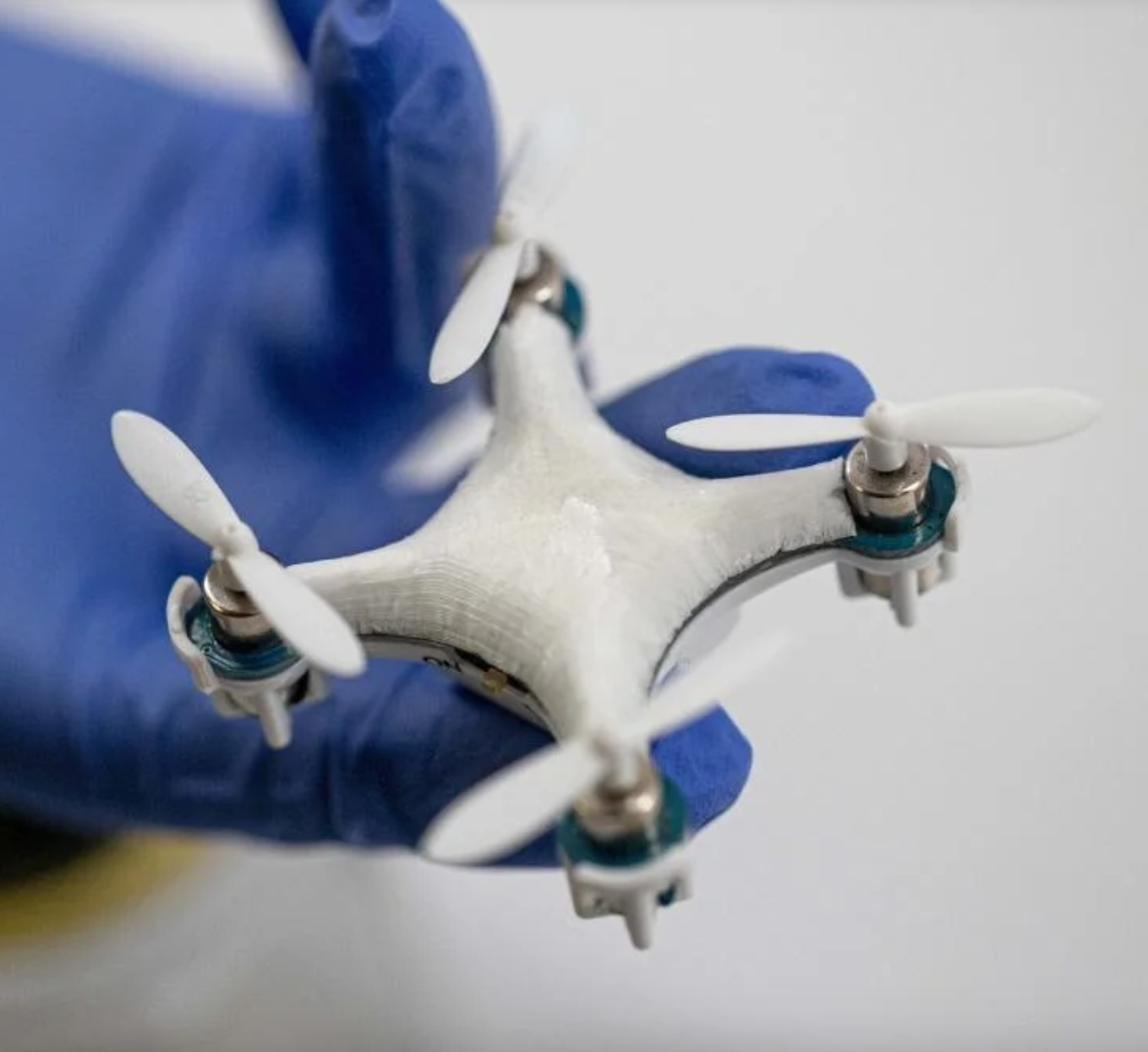David Baker, Fiorenzo Omenetto, and University of Washington and Tufts colleagues have developed a garment-printed biopolymer sensor which detects bacteria, toxins, and dangerous chemicals. To work, a chemical activator must be sprayed after potential exposure. If the target is present, the sensor generates light. The intensity of emitted light provides a quantitative measure of the concentration of the target. It can also be embedded in films, sponges, and filters, molded to sample and detect airborne and waterborne dangers, or used to signal infections, or possibly cancer, in our bodies.The researchers demonstrated how the sensor emits light within minutes, when it detects the SARS-CoV-2 virus, anti-hepatitis B virus antibodies, food-borne botulinum neurotoxin B, or human epidermal growth factor receptor 2 (HER2), an indicator of the presence of breast cancer.
The team also created viral sensing drones, with fuselage-embedded sensors. During flight, propellers direct airflow through the porous body of the drone, reacting to airborne pathogens, such as SARS-CoV-2. This could, in the future, enable monitoring environments from a remote, safe distance.
The sensors do not rely on biological components that degrade quickly and require careful storage, or on electronic components which can be difficult to integrate into flexible wearable materials.
Applications could include personal and patient monitoring, hospital infection control, and in-home, office, military and disaster environmental sensing.
